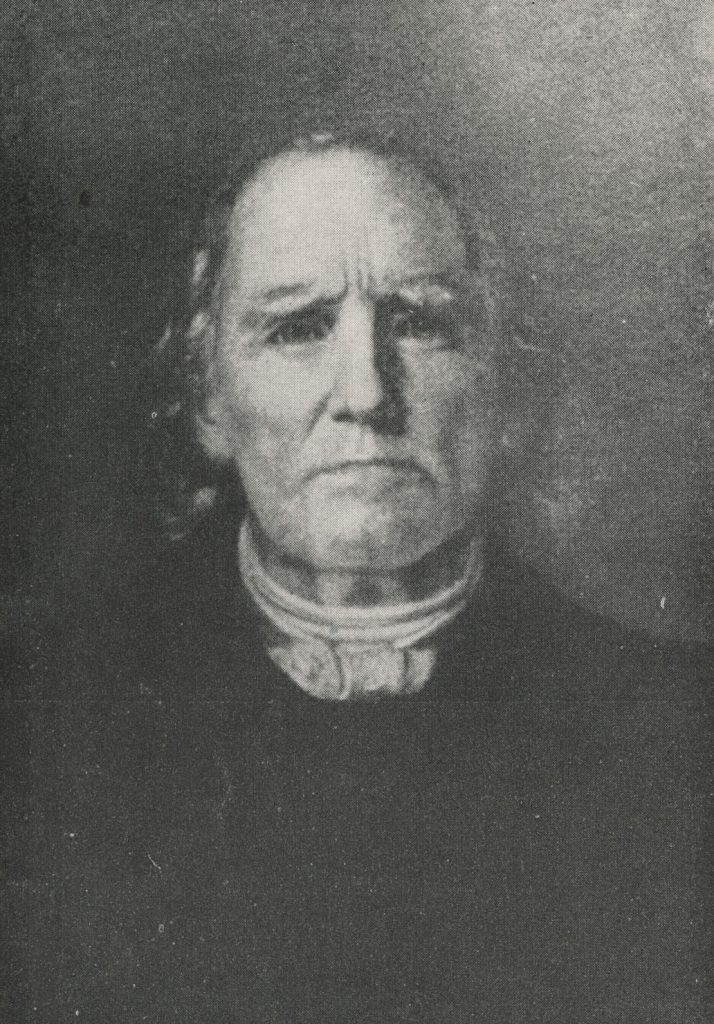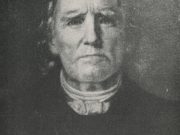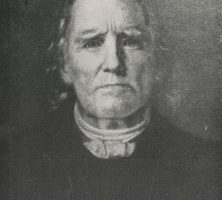Thomas Spalding, noted antebellum planter of Sapelo Island, was one of the most influential agriculturists and political figures of his day in Georgia. He devoted his professional energies to the management of his Sapelo Island plantation, where he cultivated Sea Island cotton, introduced the manufacture of sugar to Georgia, and promoted Darien and the coastal area as the economic center of the state.

Courtesy of Hargrett Rare Book and Manuscript Library, University of Georgia Libraries.
Spalding, the only son of Margery and James Spalding, was born on St. Simons Island on March 25 or 26, 1774. He was descended from the Spaldings of County Perth, Scotland. His mother was the granddaughter of John McIntosh Mohr, leader of the Highland clan of Scots who first settled the Georgia colonial town of Darien in 1736. His father was one of the earliest planters to experiment with Sea Island cotton, growing his first crop in 1786 on St. Simons.
Spalding received his early education in Florida, Georgia, and New England and was admitted to the Georgia bar in 1795. That same year he married Sarah Leake, the only child of Richard Leake, a prominent cotton planter first on Jekyll Island and later at Belleville in McIntosh County.
Early in his professional career Spalding displayed a propensity for public service. He served a term in the Georgia House of Representatives (1794-95) and the Georgia senate (1803-4), followed by a two-year term in the U.S. Congress (1805-6). In 1801 Richard Leake began negotiations for large tracts of property on Sapelo Island before his death in 1802. Afterward Spalding completed a transaction through which he acquired 5,000 acres on the south end of Sapelo, a purchase partly financed by the sale of his late father’s St. Simons plantation.
Spalding was an accomplished “scientific farmer” who experimented with an array of agricultural procedures, including crop rotation and diversification, the planting of sugar cane, and the construction of a sugar mill made of tabby, a type of cement made from crushed oyster shells. He cleared large portions of Sapelo Island through the use of slave labor and eventually became Georgia’s leading planter of Sea Island cotton. Spalding pursued a farm-based philosophy predicated not only on the cultivation of his primary staple crops of cotton (on Sapelo) and rice (on the Altamaha River) but also on secondary crops by which he sustained his labor force and livestock. He was a frequent contributor to the farm journals of his day, the Southern Agriculturist and the Southern Cultivator, freely sharing his ideas and farming philosophy with his contemporaries. Planters throughout the tidewater region adopted Spalding’s technique of building with tabby, both because of its durability and because oyster shells, one of its main ingredients, was readily available from ancient Native American middens (or trash piles). Ruins of Spalding’s tabbys are in abundance on Sapelo Island and on the mainland.
Despite having misgivings about the institution of slavery, Spalding enslaved more than 350 people. He utilized the task system of labor, and enslaved workers were supervised not by the typical white overseers but by Black managers, the most prominent of whom was Bu Allah (or Bilali), a Muslim and Spalding’s second-in-command on Sapelo.
Spalding had great respect for his home, exemplifed by his patriarchal tabby residence on Sapelo. Despite financial setbacks occasioned by the severe hurricane of 1824, Spalding recovered and continued his successful cotton and sugar operations on Sapelo. He eventually came to own almost the entire 16,500-acre barrier island. Spalding also played a prominent role in local business. He was a founder of the Bank of Darien, advocated railroad and canal development in the region, and was active in state affairs. Politically, Spalding was an influential Democrat and a pro-Union advocate. As the sectional crisis worsened in the late 1840s he was instrumental in ensuring the support of Georgia for the Compromise of 1850.
Having outlived five of his seven sons and his wife, Sarah, who died in 1843, Spalding died at the age of seventy-six at his mainland home of Ashantilly near Darien on January 4, 1851. Spalding County in west central Georgia is named for him.






